Exploring AMÉLIE: The Unique Harmony Behind the Magic
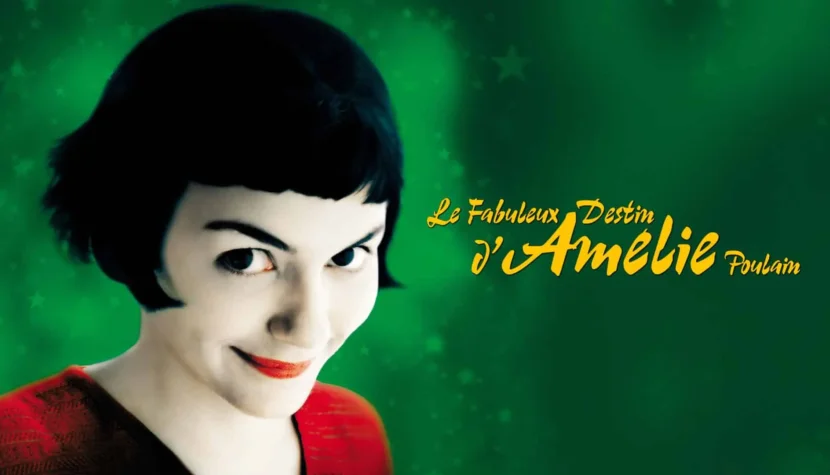
Delays can be used to withhold information, heightening the viewer’s focus through their enigmatic nature. A silent narrator, in the form of the camera, may guide us through the world, expecting us to draw conclusions and build character portraits in our minds. Alternatively (as is most common), we may follow the story according to the sequence of events, with a cause-and-effect logic, having a broad informational horizon, while the storytelling itself may be armed with strong narrative self-awareness. In such a work, which does not pretend to be an independent entity but simply a story shown to the viewer, some may fail to see the artistic value.
However, Jean-Pierre Jeunet, in creating the charming tale of Amélie, simultaneously crafted a remarkable film, both in form and storytelling. The literalness and omnipresence of the narration do not render the film trivial or shallow but rather emphasize its uniqueness.
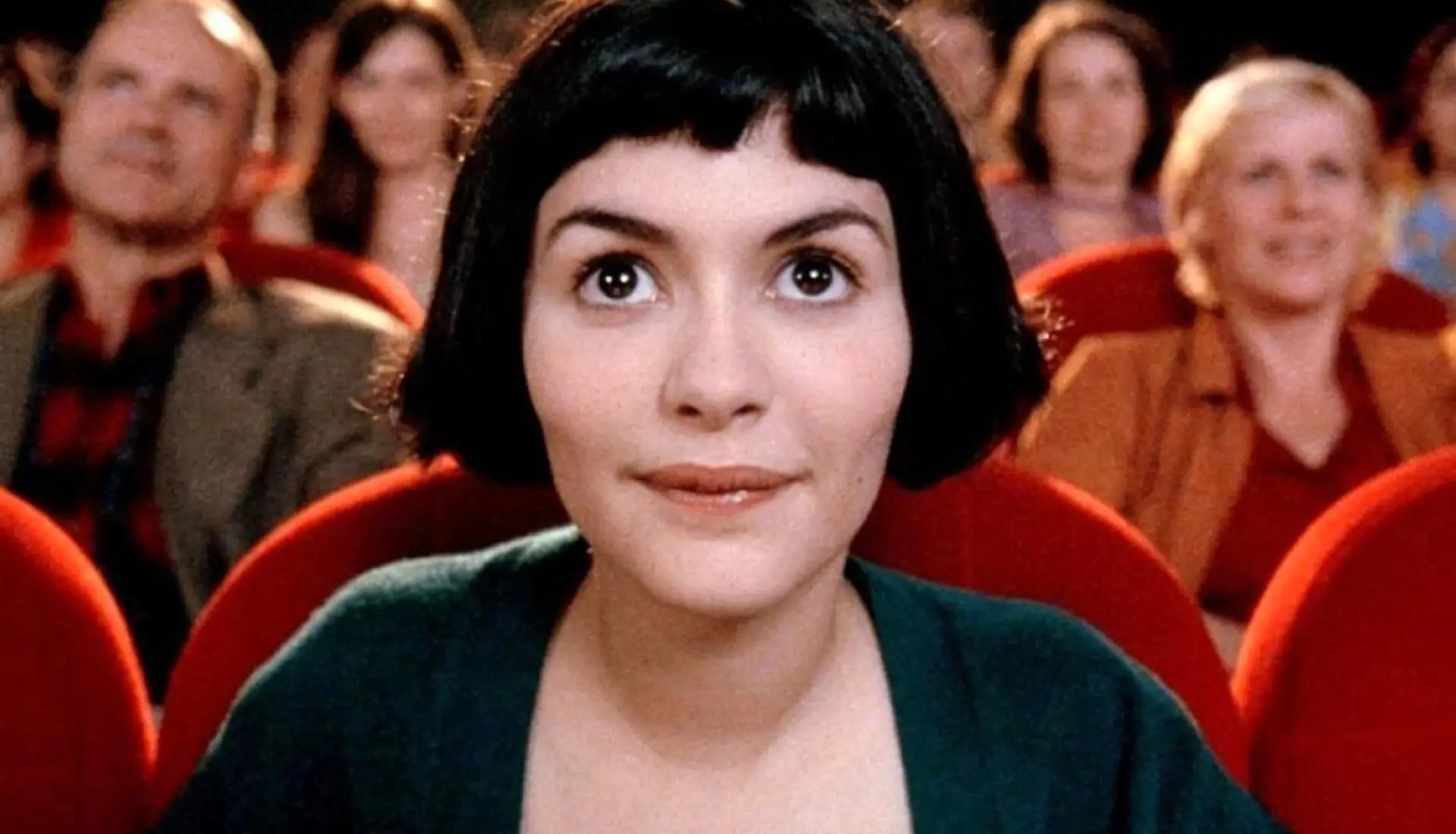
Following the words of Władysław Kopaliński, “narration is the way of telling a story,” and more broadly – a discourse presenting the sequence of events in a specific chronological order (storytelling), along with the characters and environment related to those events (description). However, this dictionary definition does not fully capture what narration is in Amélie. Cinema is a narrative form. It can describe reality in various ways, depending on which elements of the plot are chosen and how they are shaped by the story and style, reaching the viewer. “Stories surround us,” one could say after reading a fragment of David Bordwell’s book. These words perfectly fit the nature of Jeunet’s narration, in which not only the camera and off-screen narrator “speak” to us but also the main character, and at times even a lamp or a painting. The world presented in the film pulses with hidden, fairy-tale life.

If films feature an omniscient narrator, they usually supplement the plot by providing necessary information for the development of the action, which could not or should not have been conveyed in the form of scenes. This narrator accompanies what we learn from individual events and dialogues. All of this creates a coherent whole, in which the narrator is an essential element. In Amélie, the off-screen voice provides us with information about both the past and the present. The film begins with several short scenes, elements of reality that, by being shown and appropriately commented on, acquire extraordinary qualities. The number of wingbeats per minute of a fly landing on St. Vincent Street in Montmartre, glasses standing on a tablecloth billowing in the wind, and Mr. Colere, who has just returned from a friend’s funeral and erases his number from his address book. These are events that occur at the same moment as the fertilization of the egg from which Amélie Poulain will be born. The insignificance of this information in the context of the film already hints at what the director intends to focus on when presenting the life of the main character and how he will tell the story.
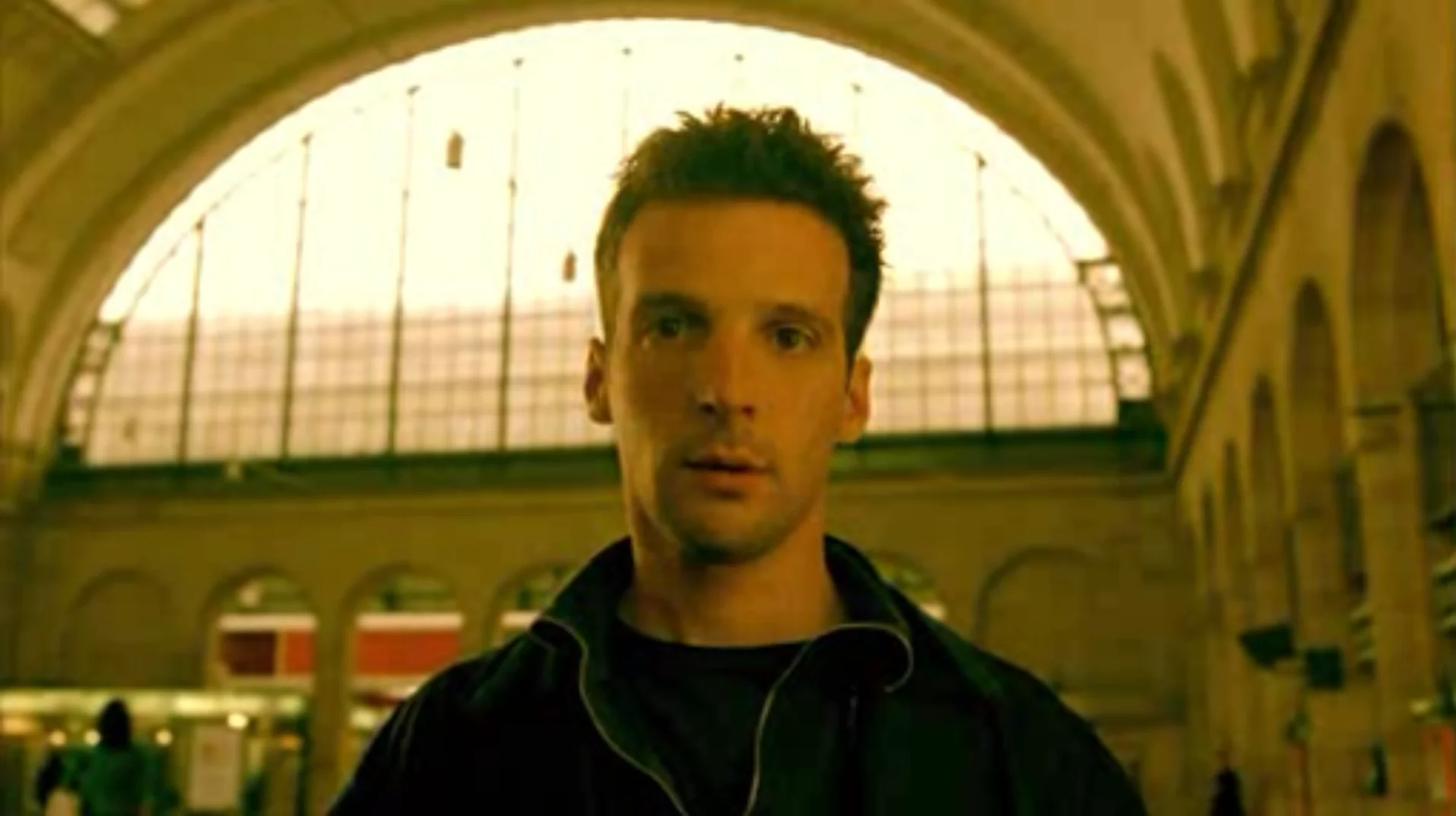
Jeunet’s approach to delivering information focuses on small details – not to summarize every second but to highlight the small things we often overlook in life. In the early part of the film, where the characters are introduced, these are things they like and dislike – everyday, trivial pleasures and displeasures. For instance, the cat that Amélie watches over in the owner’s absence enjoys being around when fairy tales are told to children. Amélie does not like old films where drivers do not watch the road. However, she enjoys dipping her hand into a sack of grain or cracking the caramelized crust of crème brûlée with a spoon.

The way characters are introduced in the film is also unusual. Of course, we will gradually get to know them as the story progresses, but the director gives us a series of seemingly insignificant details about them right from the start. These details, though apparently trivial, hint at how each character’s psychological portrait will be built. This method of providing information directs the viewers’ attention to aspects of reality that they themselves usually do not notice. This gives the film’s world its uniqueness and creates an aura of fairy-tale-like, childlike joy of life. This joy is evident even when “bad” scenes are shown in Amélie, as they ultimately lead to something positive. A good example is the character of Collignon (Urbain Cancelier), the grocer who constantly belittles his employee. Unable to stand it, Amélie sneaks into his apartment and plays small pranks on him – switching his slippers for smaller ones, replacing his toothpaste with foot cream, and setting his alarm clock to 4 a.m. Her revenge is sweet and charming. No one is really hurt, Amélie feels satisfied, and the kind-hearted employee gets some peace. This creates a story that doesn’t take place in an “overly sweet land of unicorns,” but in a normal world tinged with a touch of kindness.

From the initial stages of character development, elements appear that will recur throughout the film. One storytelling method is spying through binoculars. Amélie and her “glass” neighbor Raymond Dufayel (Serge Merlin) monitor each other’s lives by peeking through their windows. This is how we meet the mysterious man who hasn’t left his apartment in 20 years. Amélie watches him paint a picture (Luncheon of the Boating Party by Renoir) through her binoculars. We later see the painter spying on the protagonist – for example, when she sneaks into the grocer’s apartment. This method of observation is crucial for the development of the friendship that will eventually form between them. Although the man never leaves his home, he knows a lot about Amélie’s life when they first meet. They will also bond over solving a certain mystery together, as well as their mutual dislike for the grocer. The information the “glass man” has comes from his observations – he likely knows the most about Amélie because he spies on her private life. He sees her when she’s alone. The metaphor of her character is found in the painting the man is working on. He mentions that the biggest challenge he has is with the girl holding a glass of water in the center of the painting – he claims that this character seems both present and distant. Amélie suggests that perhaps she is different from the others, and at this moment, we see her identify with the girl in the painting. Our shy protagonist will inadvertently reveal the secrets of her soul, feelings, and desires during conversations about the mysterious figure. The painter will orchestrate these conversations to encourage her to open up and guide her in making decisions. Aware of Amélie’s confusion, he finds the perfect way to help her – by pretending that she is helping him.

Both the film and the main character seem entirely infused with positivity. In the depicted world, there is no sadness, anger, or worry. However, this is only an illusion. A metaphor for the girl’s loneliness is her fish, which we learn was her only friend in childhood. When the decision is made to get rid of the fish, we see it, once released into a stream, continuing to gaze at little Amélie. Gradually, the view of the fish is blurred by drops that seem to be tears falling onto the water’s surface. Her only friend disappears, replaced by a camera. Instead of living creatures, the girl has objects and fantasies. The entire sequence about her childhood is meant to make the viewer aware that Amélie is a lonely person and may have difficulty expressing her emotions. She had no contact with peers, oscillating between a nervous mother and a cold father. The narrator mentions that Amélie escaped into a world of fantasy as a child. When we see her as an adult, we learn that she constantly seeks refuge in solitude (and in “asking silly questions to the world she sees” – which also matters because it means she is not indifferent to various aspects of everyday life).
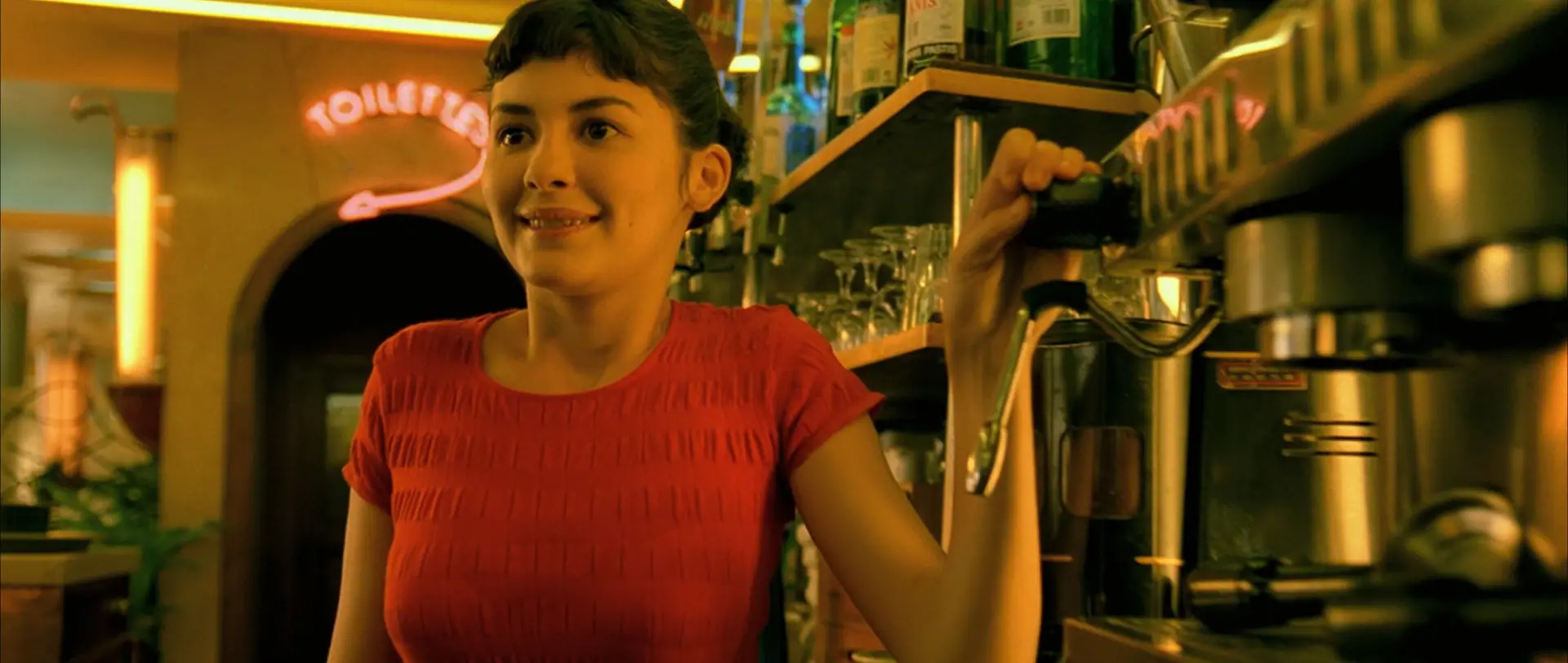
An example of someone who does not view the world optimistically is Amélie’s father. The way his transformation is told is noteworthy. From the depiction of his character, we learn that he is not very expressive, and after his wife’s death, he completely shuts down. When Amélie is an adult, her father is already retired, spending his time tending to his wife’s mausoleum. Amélie wants him to travel; he wants this too but takes no action, remaining in his stagnation. To persuade him, Amélie uses a playful trick. She steals the gnome from the mausoleum and sends it on a trip with a stewardess friend. Her father receives various postcards featuring the gnome in front of famous landmarks worldwide. Throughout the film, we see glimpses of her father with new postcards until, in the end, we see him setting off on a journey. His story is first told through the lens of his late wife. Gradually, this gives way to the opposing force of his daughter, who frees Raphael Poulain (Jacques Narcy) from his sorrowful past. Although the story is about her father, the viewer is constantly aware that it’s really about Amélie and how she influences the world. Similar motifs are also associated with the building’s concierge, the café regulars, the aforementioned grocer, and Dominique Bretodeau (Maurice Benichou), from whom it all started. Amélie cleverly and discreetly brings joy to all of them.
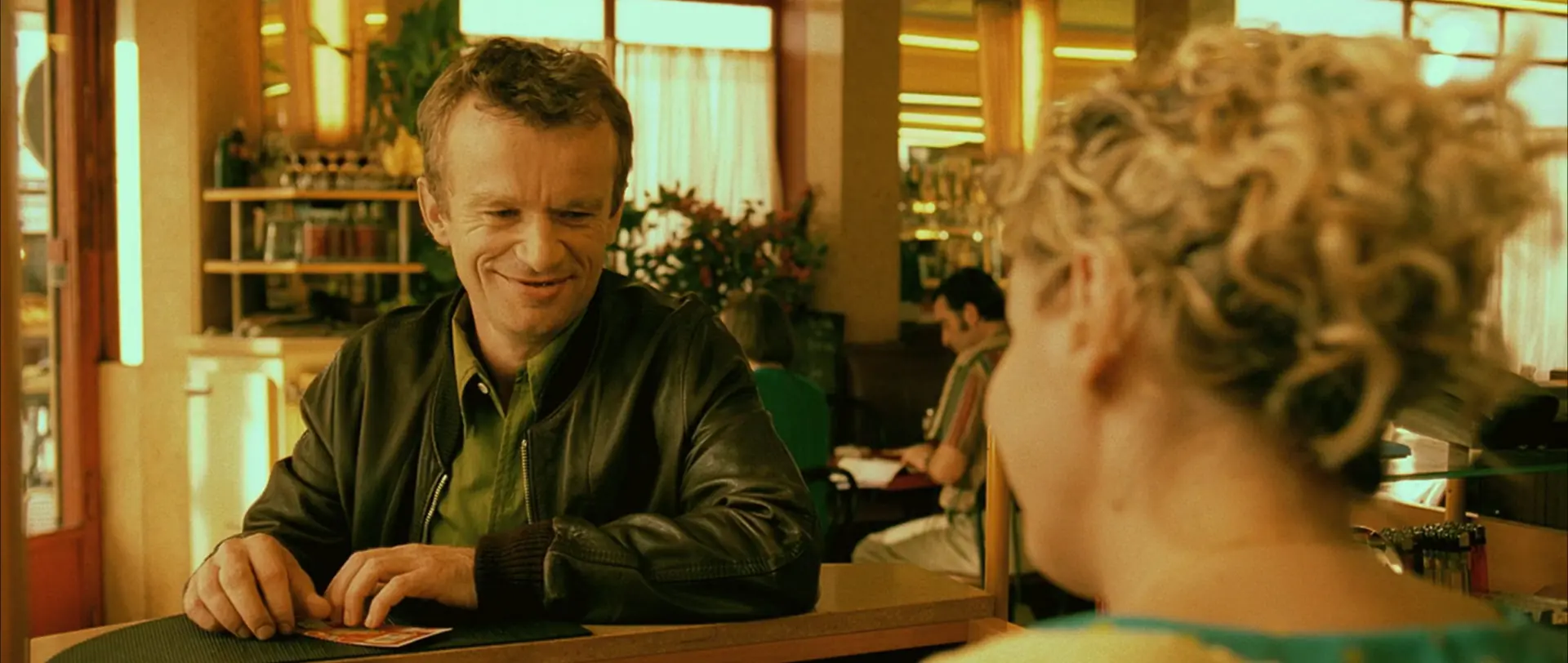
The most important aspect of Jeunet’s work is the theme of Amélie’s own happiness. In the ninth minute of the film, we learn that the life of the main character will change within the next 48 hours. At the same time, glimpses of upcoming events are revealed. In a flash-forward, we see elements that will be key moments shaping the path of these impending changes. Amélie begins to make others happy, but she is unable to do the same for herself. We receive information about her internal crisis in a scene where she cries while watching television—a program about herself. The voice from the TV describes her, while simultaneously painting a bleak future. This is one of the moments when inanimate objects begin to speak. The voice from the TV likely reflects her thoughts. The director does not delve excessively into the protagonist’s psyche—instead of narrating her worries in her own voice, he lightens the character by placing the words in the mouth of the TV character, creating a projection of her imagination. The breakdown that Amélie experiences provokes her to take action, and the series of events that begin that same night will eventually lead her to meet Nino Quincampoix (Mathieu Kassovitz), who will bring her happiness.
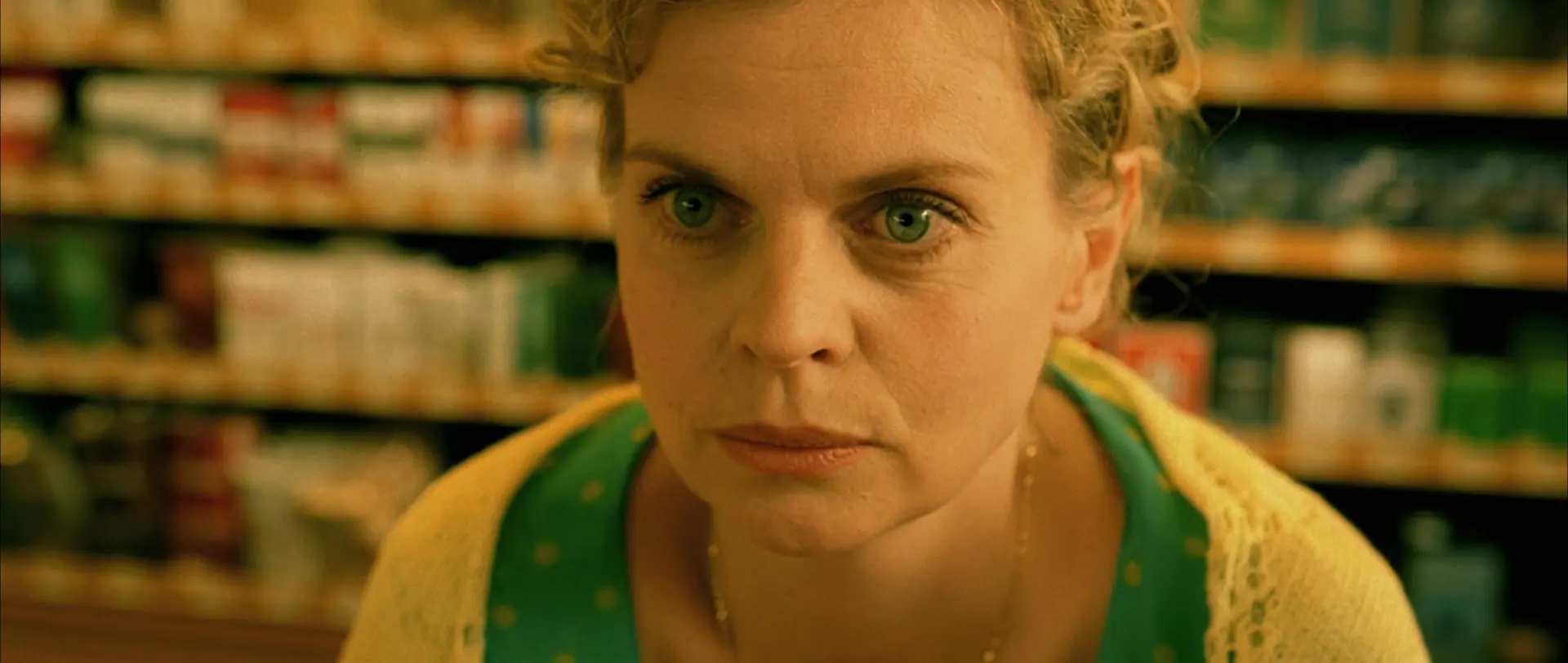
In the 57th minute, as Amélie falls asleep, the pictures on the wall discuss how she is falling in love. In the 72nd minute, a photograph in Nino’s bedroom wakes him up to tell him about her. It also mentions that the boy has known her forever, from his dreams. This analogous situation somehow connects our protagonists. A similar connection occurs when the narrator introduces us to Nino. He talks about the differences between them, but also about the similarities, which are highlighted by a split-screen image. We see Amélie and Nino in their childhoods, playing in the same way.
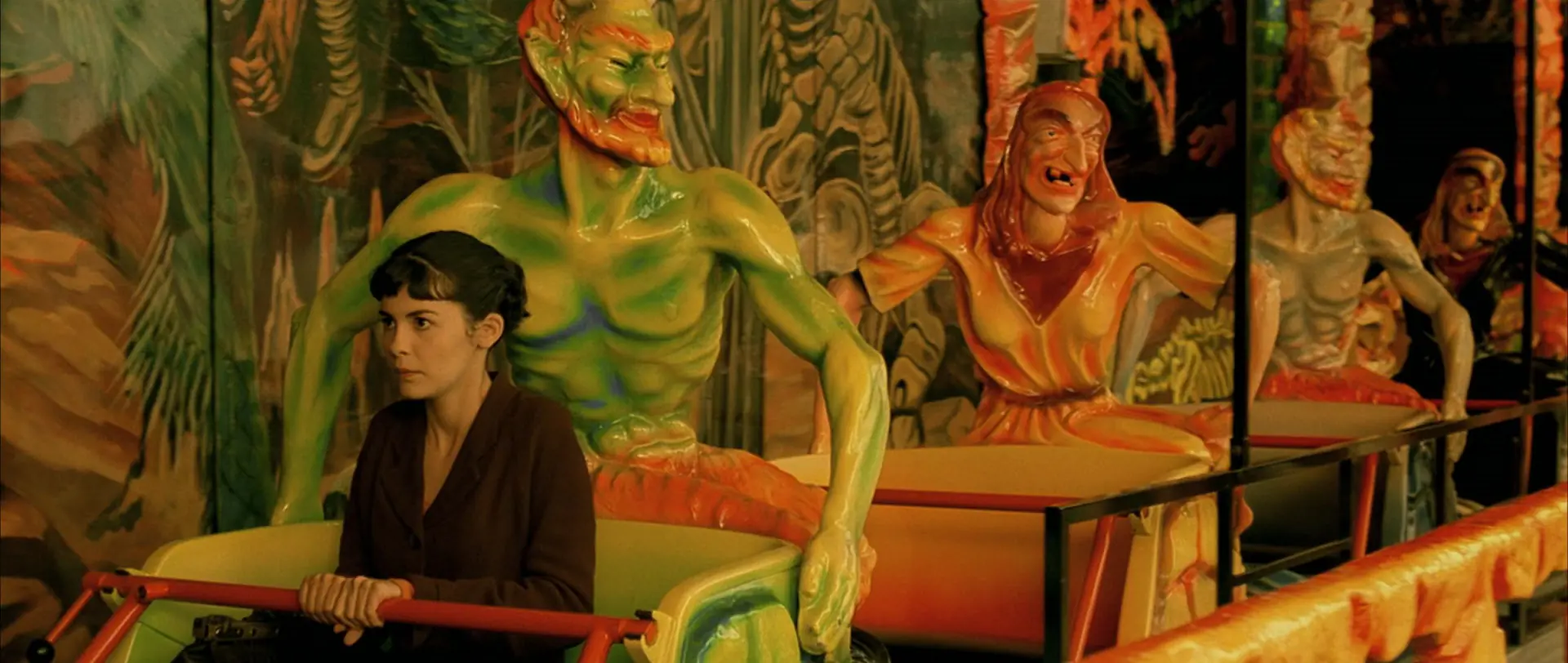
The talking objects add a fairy-tale quality and intensify the significance of imagination. This film doesn’t belong to the fantasy genre, though it has small elements that could suggest such a classification. For example, there are moments when the film literally glows. A somewhat tacky effect is used during moments of intense, sudden emotional upheaval. For instance, when the protagonist leads a blind man through the city (radiating with euphoria) or when she meets Nino. Genre-wise, Amélie represents a melodrama, or rather a romantic comedy with a slice-of-life element. The romantic subplot, which dominates much of the story, supports this classification. The comedic elements are guaranteed by the various adventures of the characters, the dialogues, and what initially seems like a drama—Amélie’s complicated situation, which ultimately entertains.
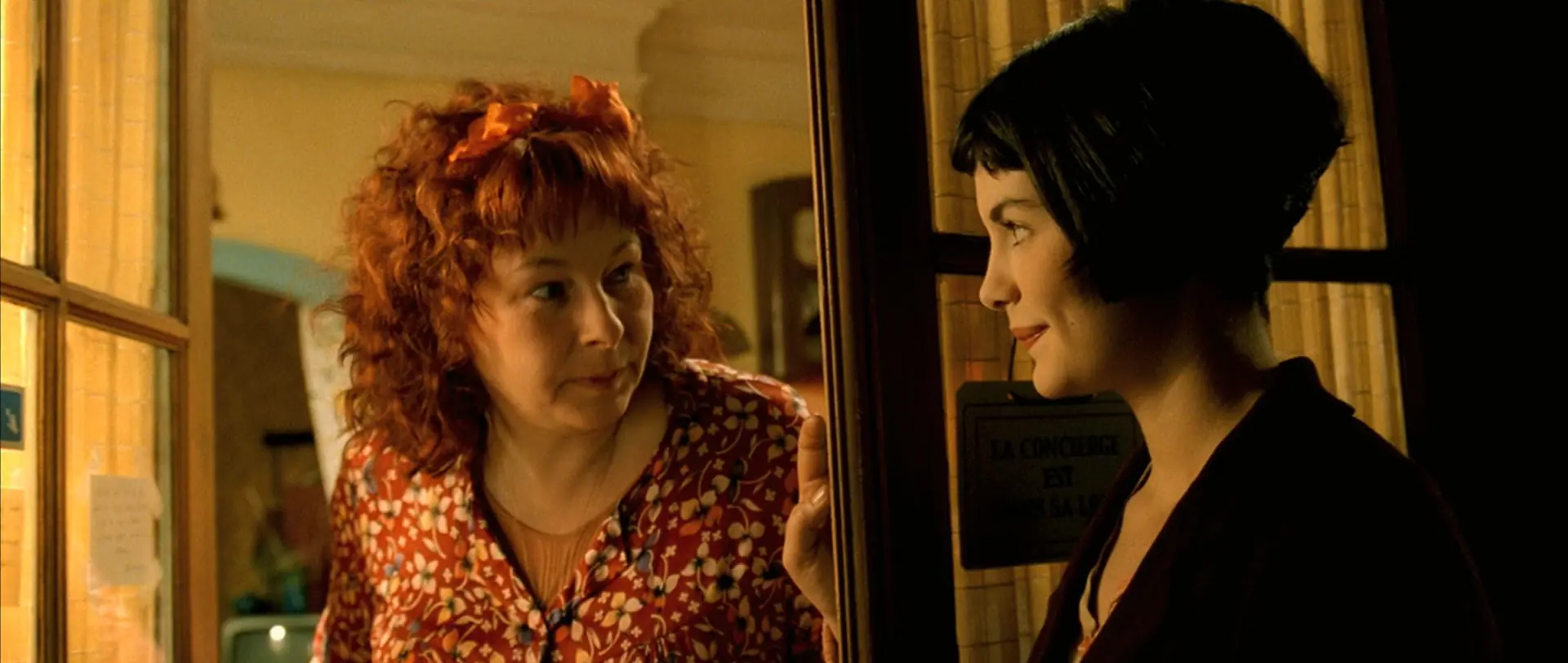
A distinctive element that also contributes to the connection between the two protagonists is the unknown man from the photos. The mystery surrounding him and his recurring red sneakers partly lead to the contact between the main characters (Nino, in trying to catch up with the mysterious man, loses an album that Amélie finds). Later, this becomes the motivation for a meeting (Amélie hints that she knows the man’s secret), and ultimately a crucial element of a meeting that does not, however, come to fruition. The secret of the man in the photos does not solve their problem of being unable to connect. It is a linking element, but fulfillment must come from their own initiative—they must take their happiness into their own hands.
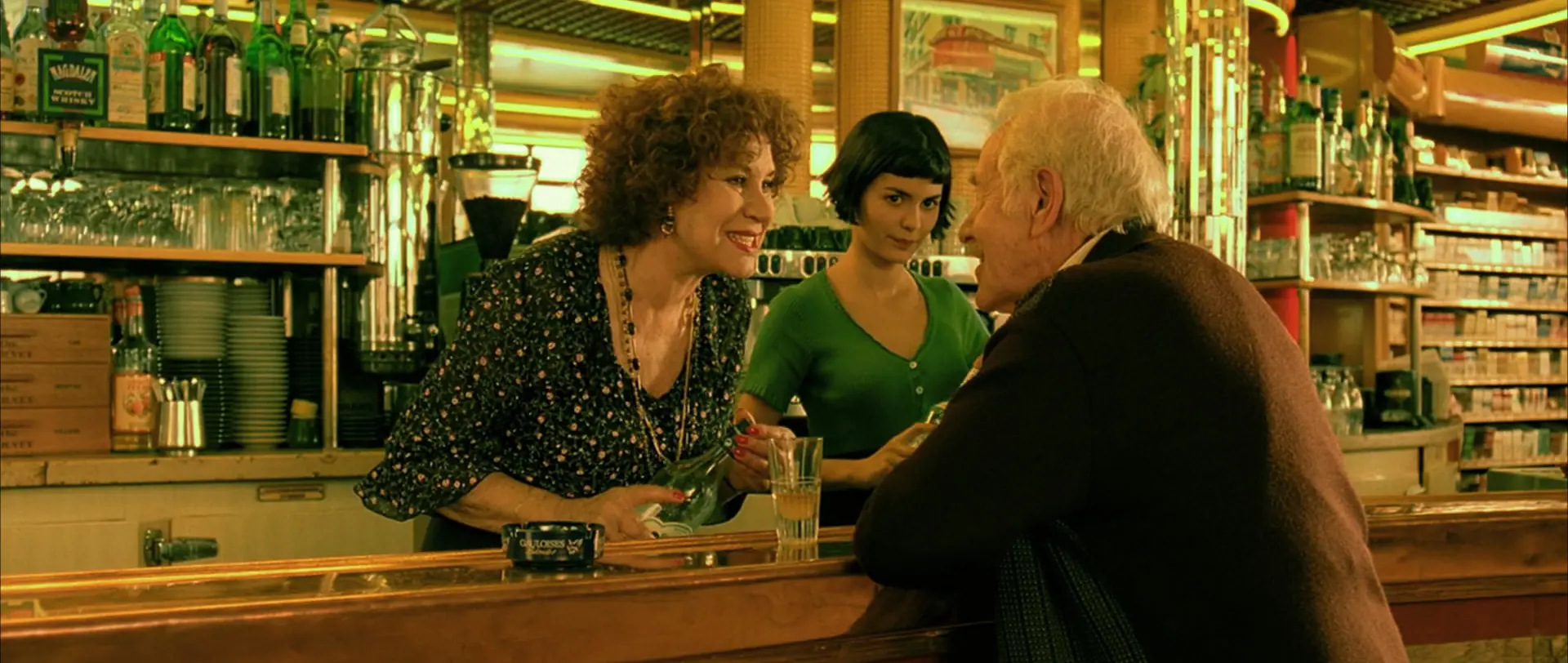
Amélie’s dreams come true in a charming way at a moment of crisis for her (the girl believes that Nino is dating her friend). Feeling dejected, she bakes a cake and imagines that the boy is going to the store to get yeast for her, where Collignon is now subordinate to his previously oppressed employee. Nino then returns to Amélie’s apartment and sneaks in to surprise her. At the same time, we observe the girl imagining this and the events from her imagination in the left corner of the frame. When the beads hanging in the passageway from the living room to the kitchen move, the movement is visible in both images. The difference is that in the dream, the beads are moved by the boy, while in reality, it’s the cat.
A moment later, Nino actually appears at her door, but Amélie hesitates and doesn’t open it. Here, the television speaks to her again, but this time it’s not the imaginary words of distant characters; it’s her neighbor, Mr. Dufayel. For the first time, he speaks to her—not quite directly, but without the cover of the girl in the painting. He talks about the opportunity she shouldn’t waste, motivating her and giving her courage. Once again, an inanimate object speaks, but this time it is, in a sense, personified. A shift occurs where fantasy gives way to reality. This is the film’s climax, restoring balance. Amélie no longer needs to retreat into solitude and imagination because she has Nino by her side, a kindred spirit and refuge. The subsequent scenes show the happy course of events, the joy of the various characters, and the continued discreet charms of everyday life, creating a closure for the entire film.

Color plays an important role in “Amélie.” Warm, pastel frames prevent negative events or emotions from dominating. Paris, digitally enhanced by the film’s creators, also exudes warmth—it’s cozy and pleasing to the eye. These technical aspects and the way the story is told ensure that negative feelings are overshadowed by positivity. The film combats a negative, harsh attitude toward life. It does this by merely sketching out worries and sharpening the focus on small daily pleasures and positive emotions. The situations we see “encourage us” to believe that life is beautiful in its simplicity and that worries or shortcomings are not meant to be dwelled upon but gradually overcome with action and optimism.
Amélie is a film that did not have a complete script, just an outline—a full script would have been too long. The abundance of details within it delights some and nauseates others, but the uniqueness of this work, which resonated widely with audiences, is undeniable. It contains interesting narrative techniques both in the storyline (the life story, the information presented) and in the technical aspects (color, editing, characters, situations, and objects speaking to the viewer). We must also not forget the excellent music composed by Yann Tiersen. It harmonizes incredibly well with what is seen on screen and forms one of the main pillars of the film’s poetic nature.
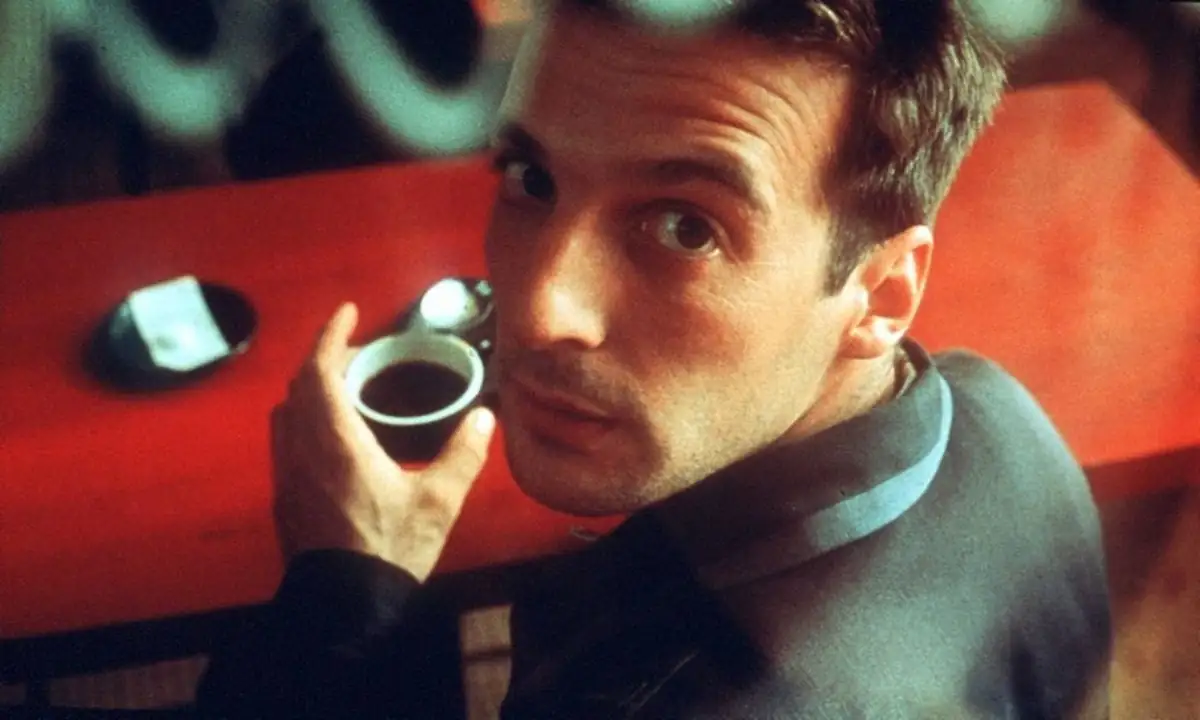
The presence of the narrator deprives us of our own habits, gifting us with a new way of perceiving. Additionally, it explains who the characters are and what they desire, characters we might not have had time to get to know well during the screening, yet all of them are intriguing individuals who deserve a bit of attention. The narrator, present throughout the film, although sometimes considered unnecessary by some, is essential to the overall experience. His voice explains the trivialities we might overlook even when seeing them—we wouldn’t look at them in the way the director shows them to us. He describes the world from a completely unconventional perspective, allowing us at times to laugh, surprised by this charming vision, and to derive double the pleasure—from the story itself and from the way it is told.
Written by Agata Marzec

